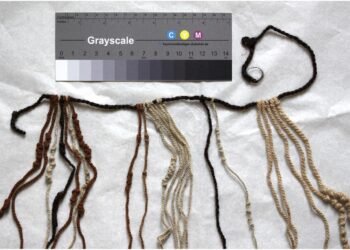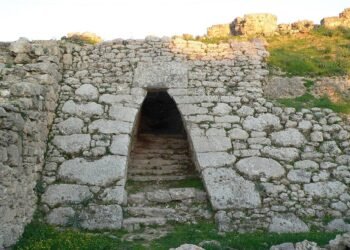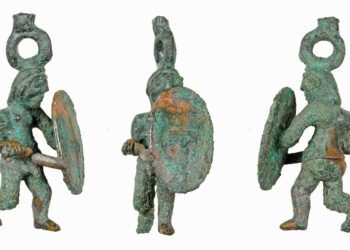Archaeologists have unearthed an 18th-century brass trade ring at Colonial Michilimackinac, a historic fort and fur trading village in Mackinaw City, Michigan.

Colonial Michilimackinac is a reconstructed 18th-century fort located west of the Mackinac Bridge, which connects Michigan’s Upper and Lower Peninsulas and spans the Straits of Mackinac, linking Lake Michigan and Lake Huron. The fort, originally established by the French in 1715, fell into British hands in the early 1760s, along with the rest of their Canadian territory, which included present-day Michigan. The British abandoned the fort in the early 1780s after constructing another limestone fort on nearby Mackinac Island.
The brass ring was discovered in a demolition rubble pile dating back to 1781 at the excavation site of House E in the Southeast Rowhouse of the reconstructed fort. Dr. Lynn Evans, curator of archaeology for Mackinac State Historic Parks, described the find as “exciting.” She explained, “Although these rings are sometimes referred to as ‘Jesuit rings,’ by the 18th century, they were strictly secular trade goods.” The term “Jesuit rings” originated because people at the time associated them with Catholic missionaries in the region.
House E, built in the 1730s, has historical significance as it was occupied by fur traders, including the French trader Charles Henri Desjardins de Rupallay de Gonneville and later by an unidentified English trader. The site has yielded several intriguing artifacts over the years, such as a lead seal dating from 1717 to 1769, another engraved “Jesuit” trade ring, a brass sleeve button, a brass serpentine sideplate from a British trade gun, remnants of a creamware plate, and a bone or ivory gaming die.

Dominick Miller, chief of marketing for Mackinac State Historic Parks told The Detroit News. “Part of the joy of finding these pieces is getting the opportunity to humanize people who lived at the site before.”
Colonial Michilimackinac has been a focal point of archaeological study since excavations began in 1959, making it one of the longest-running archaeology programs in North America. The site has been reconstructed using historical maps and more than 60 years of archaeological findings. It features several wooden buildings and a palisade, and serves as a popular tourist attraction with costumed interpreters and demonstrations.
The ongoing archaeological investigations at Michilimackinac are a central part of the visitor experience. Archaeologists work daily through August 17, weather permitting, allowing the public to observe their efforts and learn about the historical significance of the site.























